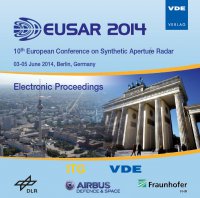COSMO SG, System Overview and Performance
Conference: EUSAR 2014 - 10th European Conference on Synthetic Aperture Radar
06/03/2014 - 06/05/2014 at Berlin, Germany
Proceedings: EUSAR 2014
Pages: 4Language: englishTyp: PDF
Personal VDE Members are entitled to a 10% discount on this title
Authors:
Calabrese, Diego; Croce, Anna; Spera, Gerardo; Venturini, Roberto (Thales Alenia Space - Italia. Italy)
De Luca, Giuseppe Francesco (Agenzia Spaziale Italiana (ASI), Italy)
Serva, Stefano (SGD-IV (MoD), Italy)
Abstract:
COSMO-SkyMed is the most important Italian Earth Observation space program. The program is funded by the Italian Ministry of Research and Italian Ministry of Defence (I-MoD) and conducted by the Italian Space Agency (ASI) in conjunction with I-MoD. COSMO Second Generation (CSG) system has been conceived, according to the requirements stated by ASI and I-MoD, at the twofold need of ensuring operational continuity to the currently operating “first generation” COSMO-SkyMed (CSK) spacecraft constellation, while achieving a generational step ahead in terms of functionality and performances. In order to ensure such continuity, the new CSG satellites will be ready for operations timely to replace the previous generation satellites whenever they are being progressively phased out at the end of their lifetime. In the current days, after having defined the mission fundamentals of the CSG space borne imaging radar system, the detailed design of both space and ground segments elements has been undertaken. In this frame this paper delineates the key concepts of the CSG system in terms of service improvement and relation with CSK. The improved quality of the imaging service is among the foremost characteristics of CSG, providing the End Users with new/enhanced capabilities in terms of higher number of images and increased image quality (i.e. larger swath, and finer resolution) with respect to COSMO-SkyMed (first generation) spacecraft currently in operations, along with additional capabilities (e.g. full polarimetric SAR acquisition mode) and a greater operative versatility in programming and sharing the system resources among different typologies of Users that request images of different characteristics. Further, while describing the above mentioned topics, this paper shows the key aspects of the CSG engineering approach adopted in order to conceive CSG, that starting from the User requirements ends with the design of the lowest-level system building blocks. Besides, key elements both at space and ground segments are highlighted within this paper.


